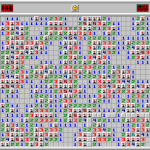There are several types of beaches. The Beach can be located at the ocean, sea, lake, or river. Read this article to learn about the different types. This article also describes how to find a suitable Beach for your vacation. You may also be wondering what the difference is between a beach and dunes. Here are some of the common types of beaches. The Beach is a natural formation where water meets land. It can be found almost anywhere in the world.
Ocean
Sediments on a beach depend on sediments deposited upstream of the Beach. Waves and wind move these sediments and determine their composition. There are three zones of beach formation influenced by the waves: shoaling, breaking, and erosive. Each zone has its specific characteristics. These characteristics are discussed below. For example, shoaling waves produce small ripples on a beach. The wave’s energy is dependent on the size of the sediment particles.
Sea
The waves are an essential part of the ocean experience. They come in all shapes and sizes and are sometimes so large that they cover entire ocean basins. The wind is the most common cause of ocean waves, but other factors can also create them, such as an underwater disturbance like a volcanic eruption. On the other hand, Tsunamis are tens or hundreds of kilometers long. And tides and tidal waves are caused by the gravitational pull of the moon and sun.
Lake
The second largest freshwater lake in China, Dongting Lake, is home to a large stretch of beautiful Beach. It contributes to flooding control and supports ecosystems within the middle Yangtze River reach. The lake’s rapid sedimentation and intense human activities make monitoring the lake’s Beach a complex challenge. But one study revealed that the shoreline area increased significantly during the wet season. The Beach’s ecological benefits and the health of the ecosystems depend on it.
River
The Lower Reach of the River is a tidal stretch adjacent to the campground. This area is often used for picnicking, swimming, fishing, and whitebait in season. Recent Recreational Bathing Surveys have found that this section has consistently exceeded freshwater microbiological water quality guidelines. Currently, the water quality is considered ‘Action.’ However, there are concerns about the area’s safety, and the city has outlined several ways to improve river health.
Pocket beach
The term “pocket beach” describes an artificially constructed beach with limited dimensions. These beaches are often located on stretches of coastline characterized by rapid erosion and high tourism. This article provides a detailed description of the characteristics of pocket beaches and the methods used to create them. The authors also discuss some of the potential problems associated with them. The article provides some practical recommendations for constructing a pocket beach. Read on to learn more!
Dunes
The dunes on a beach are formed by wind-driven deposits of sand on top of one another. Dunes tend to collapse when their angle of repose exceeds 30o. This angle varies depending on the grain size and roundedness of individual grains. Dunes on a beach are commonly U-shaped or V-shaped. Some dunes have rounded tops and bottoms, while others have a convex shape.
Rock formations on beaches
Blackrock, a type of cemented sandstone, forms in the intertidal zone. It is a mixture of sand grains and calcareous marine fragments and has been cemented by seawater under conditions similar to those found on beaches. Because beach rock formation is not well known, its vertical accuracy is reduced. However, its occurrence is a significant benefit in studying sea-level changes.
Size
The size of a beach depends on its tidal range and the slope at which it reaches the ocean. The size of grain and slope are essential factors in beach morphology, but they are not well understood. Research in this area began with the World War II Waves Project, which looked at beaches in various parts of North America. A groundbreaking study published in 1951, called Bascom, focused on this topic. Despite the difficulties of interpreting these results, it is essential to note that beach slope is related to many factors, including the size of the sand and the grain size.
Shape
Many factors, including human activities, determine the shape of a beach. The basic processes responsible for shaping and defining a beach are longshore sediment transport and cross-shore erosion. In some cases, freak wave events can dramatically alter the shape and profile of the Beach. But how do these processes affect the shape of a beach? What can you do to protect it? Read on to learn more about beach shapes and erosion. And don’t forget to explore the history of these changes.
Composition
A beach’s composition reflects the sediments it has accumulated upstream. Waves move the sediments, and the size and compaction of the particles determine how they move. Compacted sediments have more excellent resistance to erosion, while smaller particles are more easily moved by wind and water. A dense, compacted layer will be less prone to erosion, and a thicker layer of vegetation will slow the fluid flow at the surface layer. Particles suspended in moving water are more erosive than suspended sediment. Particles in suspension increase the moving fluid’s density, volume, and erosive power.



